Buddhism
Milarepa: An Ordinary Man And His Poetry Of Life
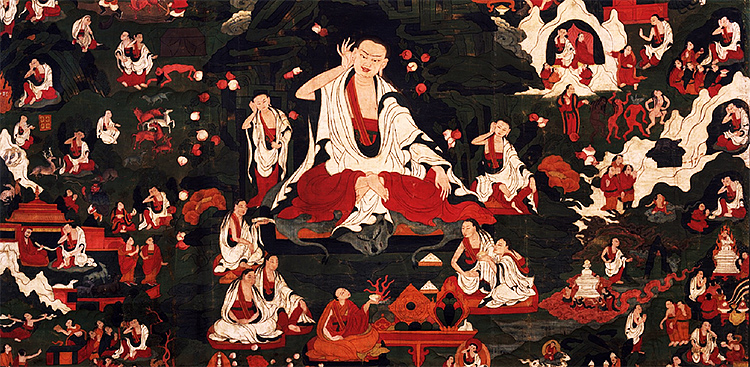
Milarepa was a great yogi, and his words provide profound inspiration to all followers of the dharma.
Milarepa achieved Buddhahood in a single lifetime by spending years in mountain caves across southern Tibet, he practiced the stage of generation utpattikrama visualizing himself as a Buddha and his own body as a mandala.
Milarepa and his songs are the most poetic source of spiritual inspiration, a symbol of Tibetan Buddhist culture and appreciated by many for the beauty of his enlightened verses. Here our favorites:
Milarepa on mind
He who avoids misunderstandings,
Amused at the play of his own mind,
Is ever joyful.
fear and doubts have vanished like mist into the distance, never to disturb me again.
Oh, this self-realizing awareness
is beyond words and description!
The mind is not the world of children,
nor is it that of logicians.
Most poetic verses
River, ripples, and waves, these three,
When emerging, arise from the ocean itself.
When disappearing, they disappear into the ocean itself.
The voice of the cuckoo is so moving,
And so tuneful is the lark’s sweet singing,
That when I hear them I cannot help but listen —
When I listen to them,
I cannot help but shed tears.
Milarepa on Money
Because of the fear of poverty, I sought for riches;
The riches I found are the inexhaustible Seven Holy Jewels.
Now I have no fear of poverty.
Milarepa on songs
However beautiful a song may be,
it is just a tune to those
who do not understand its meaning.
Milarepa on Meditation
When meditation is clear light river flow
There is no need to confine it to sessions and breaks
Meditator and object refined until they’re gone
This heart bone of meditation, it beats quite well.
Rest like a small child.
Rest like an ocean without waves.
Rest like does the candle flame.
Rest without concerns.
Rest still like a mountain.
Milarepa was a poet and a saint but most of all an ordinary man who explored with his verses his spiritual path of redemption through discipline and perseverance, and achieved enlightenment. These beautiful verses are taken from the following books:
Best Five Books Written By The Dalai Lama on Buddhism
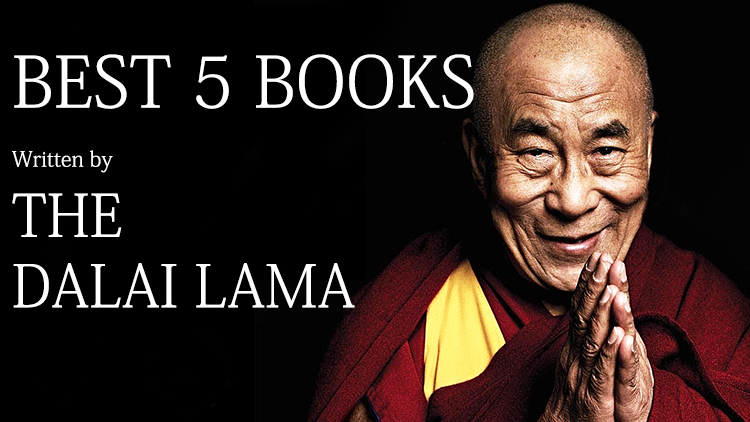
Most people living in Asia are knowledgeable of the most important principles of Buddhist doctrine. Many visitors of our website are very fascinated by our works of art and quite often we receive messages from people asking about the meaning behind symbols and sometimes it’s difficult for us to provide a simple answer.
Buddhism is a very complex system of belief that focuses on personal spiritual development. His Holiness the Dalai Lama is undoubtedly the “authority” on the matter and his books offer a clear vision of the Buddhist path.
The mission of the Dalai Lama as bodhisattva focuses on helping human beings to achieve enlightenment and as author he wrote dozens of books aimed to reach his goal.
We selected the best 5 books written by the Dalai Lama aimed to people that are interested in learning Buddhism.
Approaching the Buddhist Path
This book is the first of a trilogy where His Holiness illustrates and explain every step of the path to enlightenment, compiled and coauthored the American Buddhist nun Thubten Chodron.
This first volume provides basic notions on Buddhist history and offers an ample introduction to the fundamentals of Buddhism accompanied by the Dalai Lama’s own personal experiences. To purchase the book click on the cover.
The Foundation of Buddhist Practice
In this second book his book the Dalai Lama explain the key teachings to start the practice of the Dharma. The book offers a simple description on how to structure a meditation session, the appropriate relationship between the spiritual mentor and the student and a series of chapters on the low of Karma and the concepts of death and birth. To purchase the book click on the cover.
Samsara, Nirvana, and Buddha Nature
Samsara, Nirvana, and Buddha Nature is the third volume of the trilogy. In this book the Dalai Lama and Thubten Chodron give relevant information about the four noble truths. The reader will learn how to improve the personal practice with insightful and easy to apply methods. about the mind’s infinite potential through to the teachings of Dzogchen. To purchase the book click on the cover.
The Art of Happiness
This book is considered a classic and the cornerstone of the field of positive psychology. The Dalai Lama here addresses many issues that we all face in daily life. The desires, the angers and ignorance which prevent us from realizing goodness and happiness. He offers the point of view of a simple Buddhist monks on these issues and teach us how to ease our path to happiness. In this book His Holiness proves his amazing ability to say things that are both simple and profound, and touches everyone. To purchase the book click on the cover.
My Spiritual Journey
This book is composed mainly of three parts; The Dalai Lama as a Human Being, the Dalai Lama as a Buddhist monk, and The Dalai Lama as the Dalai Lama. It consists of excerpts from speeches, interviews, and other books of the Dalai Lama over the years. It is considered the most intimate book of His Holiness and close enough to be considered an autobiography of the spiritual leader. To purchase the book click on the cover.
It is known how Buddhism doesn’t have one holy book only, as many other religions. Several authors and scholars trough history contributed to a vaste library exploring many concepts that can be hard to grasp.
With his books the Dalai Lama makes things simple for us. His examination is eloquent and comprehensive, and lovingly invites each of us to learn a little about Buddhism – and about ourselves.
Happy reading.
The Sacred Symbolism Of The Kalachakra Mandala
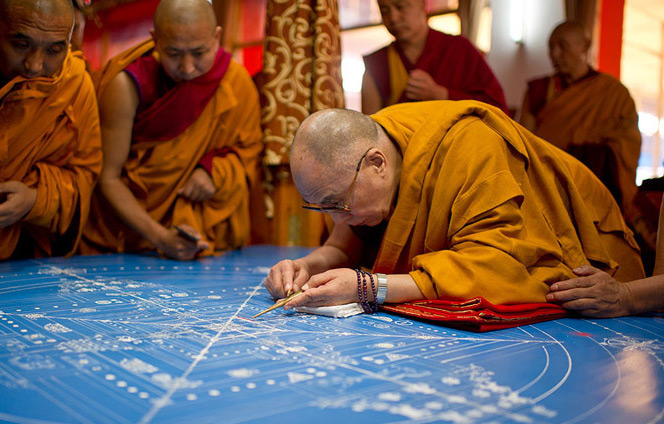
The Kalachakra mandala is definitely one of the most eye-catching thangka painting and appreciated for the symbolic elements that compose it and the visual representation of important teachings of traditional Tibetan Buddhism.
However, as explained by His Holiness the Dalai Lama, many mistaken interpretations have circulated among people who viewed the Kalachakra mandala simply as a work of art.
The Kalacakra tantra is considered the most advanced practice of Vajrayana tradition. This complex system of teachings was originated in India and incorporated into Tibetan Buddhist tradition.
The Dalai Lama himself attends to a series of rituals called “Kalachakra empowerment initiation” and the creation of the Kalachakra mandala is used as a visual textbook for Buddhist practitioners.
The Kalacakra initiation is based on the concepts of time (kala) and cycles (chakra) and, before approaching these rituals, the disciple should have acquired knowledge of the three principal aspects of the Mahayana doctrine: Samsara, Bodhichitta and emptiness.
In this article we will not examine in depth the philosophical aspects of the Tantric initiation but we will focus on explaining the significance of the symbols depicted in the mandala.
First of all it is important to know how to display the Kalachakra mandala correctly. Notice the four different colors of the main inner elements (red, yellow/orange, white and black). The mandala must be oriented with the black side facing down.
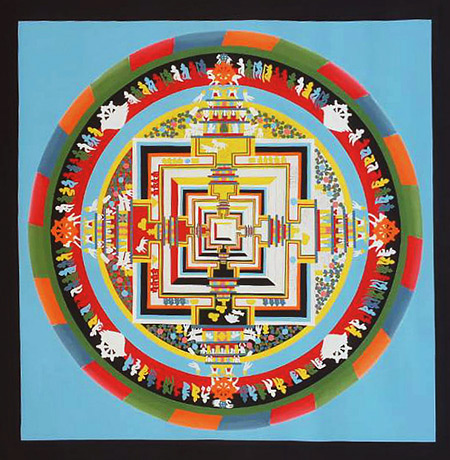
The outer ring is called wisdom circle or protective ring. It is decorated with golden flames and the combination of these colors create a rainbow that symbolize the five aspects of the primordial wisdom and the five Dhyani Buddhas.
After the space ring there are four inner rings representing the four main elements: air, fire, water, and earth.
The central part of the mandala had 3 distinct inner layers called body, speech and mind mandalas.
The geometric structure is the projection of a majestic palace with four gates and five floors.
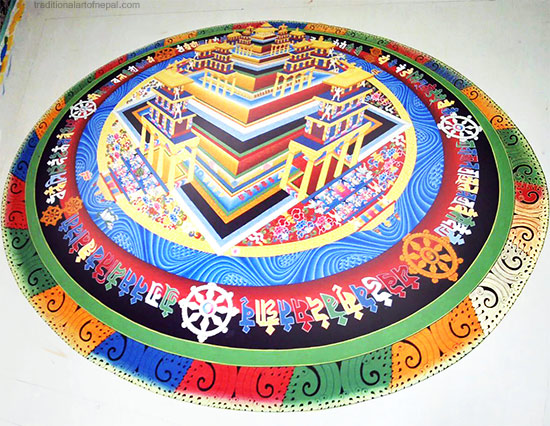
Inside the Body Mandala are represented with syllables and symbols a total of 536 deities. Twelve animals are depicted inside the main gates and protecting the outer walls, representing the months of the year.
The Body Mandala surrounds the Speech Mandala that has the same geometry and inside of which are represented 36 offering goddesses and 80 Yoginis.
The most inner part is called the mind Mandala that occupy the last three floors of the palace and homes 80 deities.
The lotus flower at the center is the symbol of the Buddha mind.
There are several design of thangka paintings of the Kalachakra mandala. In the most complex artworks two deities are depicted in the center of the mandala instead of the lotus flower.
These important deities are Kalachakra and Vishvamata depicted in Yab-Yum: the divine Tantric union that symbolize the cyclic nature of time. This is why the Kalachakra Mandala is also called the “time wheel”.
The Kalachakra Mandala is also represented with one of the most important and well known symbol of the Tibetan Tantric tradition: the Sanskrit seed syllables of the Kalachakra system known as “the mighty ten stacked syllables”.
Each syllable that compose the mantra has a different color and they are represented all interconnected on top of a lotus flower and surrounded by a ring of fire.
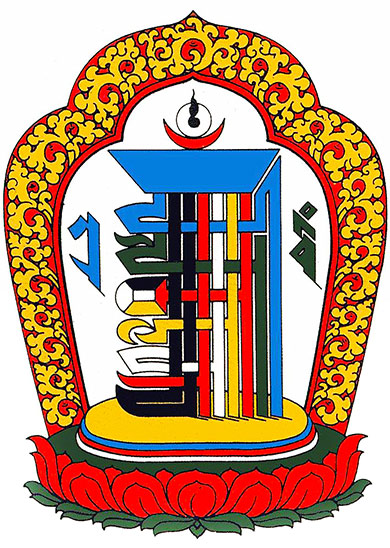
To meditate on the mandala and recite the Kalachakra mantra bring peace of mind and benefits for all sentient beings.
The powerful Kalachakra mantra is spelled: Om Ham Ksha Ma La Va Ra Ya Sva Ha.
Namaste.
Shoton Festival- Exhibition of Thangkas and Tibetan Masks in Lhasa
The Shoton Festival is held each summer in Lhasa and it is considered to be the largest Tibetan festival. Also known as the Yogurt Banquet festival it dates back to the 11th century and was originally a religious occasion, when local people would offer yogurt to monks who had finished their meditation retreats.
It is a very appealing event not only for Tibetans and Buddhists coming from different countries, but also for many travelers willing to discover this striking event on the roof of the world.
The festival mainly consists in exhibitions showing the art, tradition and the appealing culture of the Tibetan people. Very famous events are the Tibetan Opera Show and the Horsemanship and Yak Race Show. However the main event that open the festival is the display of the giant thangka showing the Great Buddha.
During the ritual more than 100 monks unveil an old 1,480 square-meter portrait of Sakyamuni knitted with colorful silk.
During the festival (this year from the 6th to the 12th of August) there are celebrations in the streets, squares and monasteries of Lhasa.
As part of this year’s festival, a grand exhibition of traditional Thangkas and Tibetan masks is staged at Norbu Lingka, the former summer palace of the Dalai Lamas.
How To Order
- Browse our catalog and choose your favorite design.
- Select your preferred size and quality to check the price.
- Click on “Product Inquiry” to send us a message and we will check if we the artwork is immediately available. If not we will make it for you.
- Use the cart page to calculate the shipping cost by selecting your country.
- Once we receive your order we will start creating the artwork according to your preferences and provide you with updates and images upon your request.
We strive to ensure a smooth shopping experience with our assistance. We also welcome commissions of custom designs of thangkas, masks and mandalas.
Shipping and Payments
We offer trusted shipping options to ensure your purchases arrive in perfect condition, and delivered in 5 to 10 working days worldwide. We accept PayPal, debit/credit cards and bank wire transfer services.
About Our Community
We live in Changunarayan, a UNESCO heritage site located on a forested hill overlooking Bhaktapur and the Kathmandu valley. You are welcome to visit our art school and meet our community of artists and artisans.
Learn More About Our Thangka School And Workshops
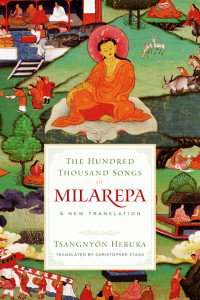
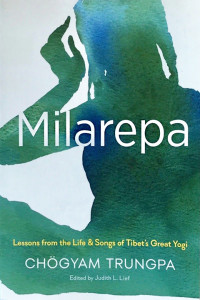
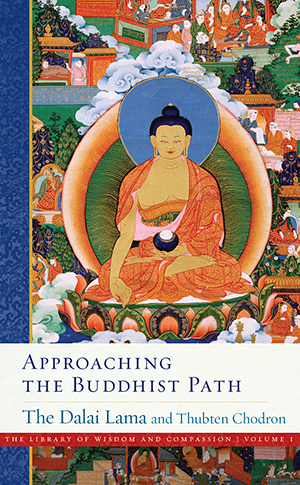
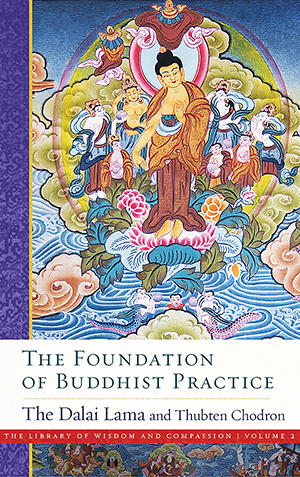
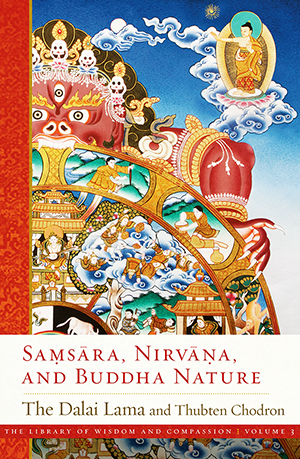
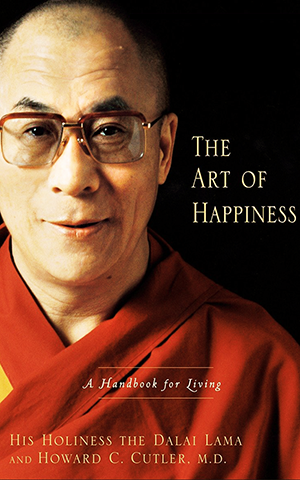
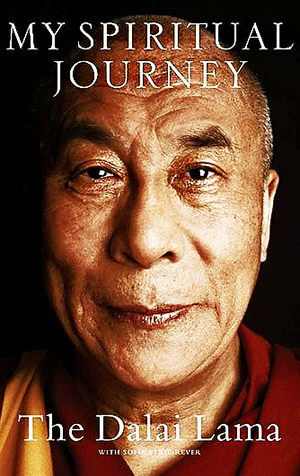
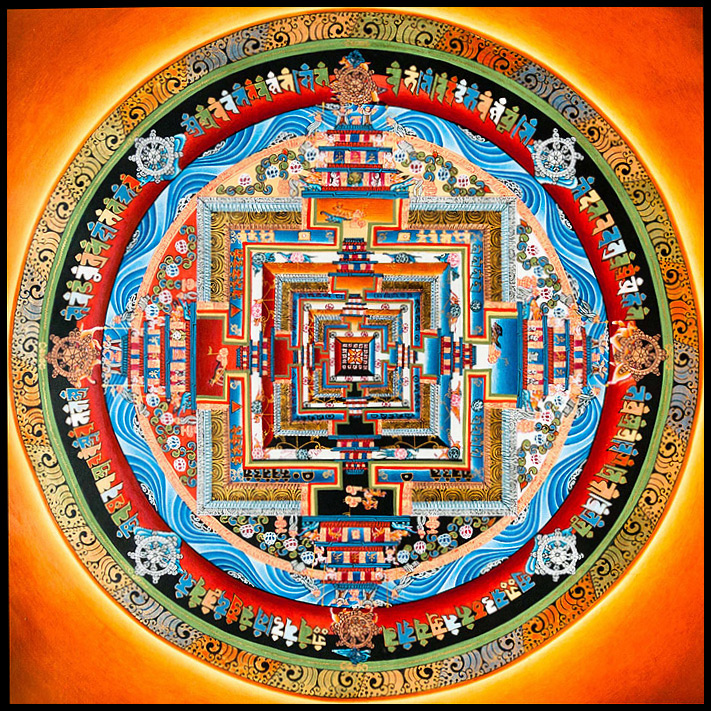
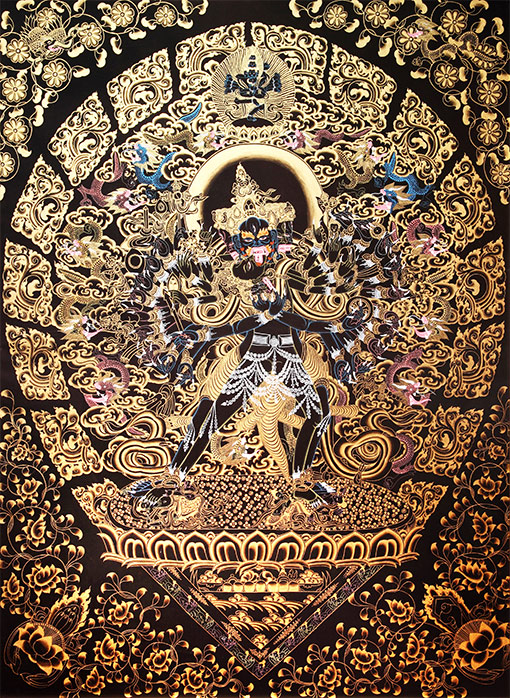
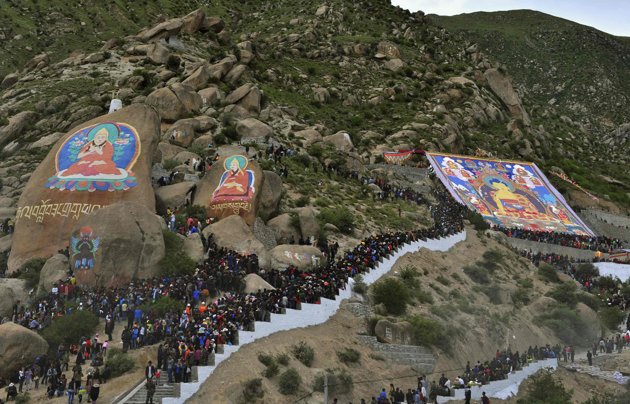
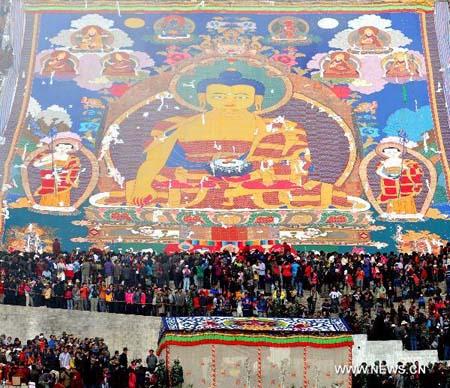
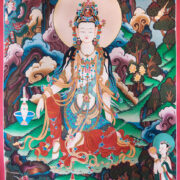 Quan Yin Thangka
Quan Yin Thangka 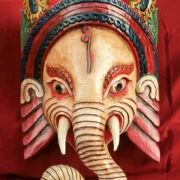 Ganesh Mask Design #01
Ganesh Mask Design #01 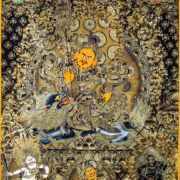 Five Jambhala Thangka
Five Jambhala Thangka 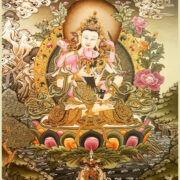 Vajrasattva
Vajrasattva 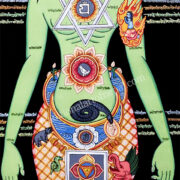 Chakraman Yogi
Chakraman Yogi 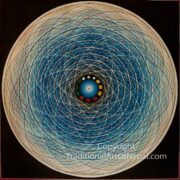 Universe Om Mandala
Universe Om Mandala 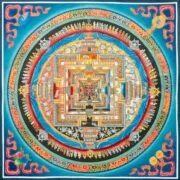 Kalachakra Mandala Auspicious Symbols
Kalachakra Mandala Auspicious Symbols 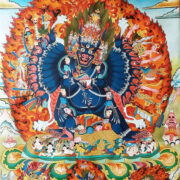 Vajrabhairava
Vajrabhairava 